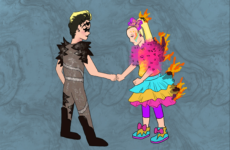
Photo from henryherald.com
On September 11, Nicole Schmidt reported her daughter, Gabby Petito, missing after not hearing from her for 13 days. Petito had been on a road trip with her significant other Brian Laundrie, from which Brian returned alone, then promptly disappeared from the public eye. After a national investigation, Gabby Petito’s body was found in Grand Teton National Park in Wyoming, eight days after the missing persons case was filed. This tragic case has been on everyone’s minds across the country. However, the extensive national coverage of this case has brought to light the racialized way news outlets present missing persons cases, omitting thousands of stories that don’t focus on young, white women.
Ever since Gabby went missing, the front page of every news outlet has been covered in updates about the case. Her story has captured the attention of millions of people on social media with over 794 million people viewing “#gabbypetito” on TikTok alone. Although race should never be the center focus in any missing persons case, Gabby’s story was racialized from the start, with news stories focusing on her physical appearance. Because of this, many attribute the national obsession with this story to “missing white woman syndrome,” a term coined by Gwen Ifill in 2004, referring to the disproportionate media coverage of missing persons cases based on race. Although this syndrome has impacted the media coverage of Gabby’s story, it isn’t the sole contributor to the widespread attention.
To start, there is lots of public footage of Gabby’s trip — from her personal vlogs to police body camera footage of a traffic stop — that has caused many to become attached to her as an individual. This, along with her considerable social media following, allowed many to become invested in her story, which eventually led to individuals finding clues related to her case. Jenn Bethune, who was in the Bridger-Teton National Forest at the same time as Gabby, obtained footage of Gabby’s van that ultimately helped investigators. Unfortunately, this story will always be underlined with racial bias in our society and the sad reality that millions of families of missing people of color don’t get to experience the same national attention.
The obsessive nature of news coverage about missing white women constantly undermines the trauma of other missing people and their families, especially when the disappearances of many people of color do not garner as much media interest. In Wyoming, the state where Gabby’s body was found, 710 Indigenous people, mostly women and children, remain missing and have received no media attention for their stories. In addition, missing Black people are severely underrepresented in news coverage. This can be attributed to the lack of racial identities in executive positions in news boardrooms, or the social depictions of white women as innocent and women of color as complicit in their disappearance. Whatever the reason, it doesn’t change the fact that missing persons cases deserve to be treated equally, and the racial biases of American society should never impact the way we think and sympathize with missing people.
Gabby Petito was a young woman who should have gotten to experience her life to the fullest but was tragically deprived of that chance. There are numerous others like her such as Jelani Day, who went missing August 24, and Daniel Robinson, who went missing June 23, who deserve to not only experience life but to have their lives and disappearances valued, prioritized, and humanized by the media and society. The ability to empathize with Gabby and her family over the past few weeks is a high point that we should apply to all victims, regardless of racial background.




